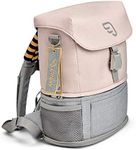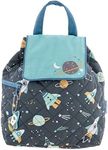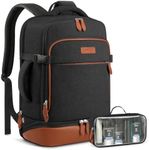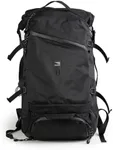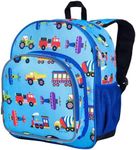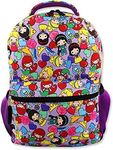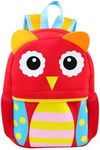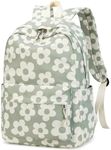Buying Guide for the Best Airplane Backpack
Choosing the right airplane backpack can make your travel experience much more comfortable and convenient. The ideal backpack should be able to hold all your essentials, fit within airline carry-on size limits, and be easy to carry around. Here are some key specifications to consider when selecting an airplane backpack, along with explanations to help you make the best choice for your needs.Size and CapacitySize and capacity refer to the dimensions and volume of the backpack. This is important because it determines how much you can carry and whether the backpack will fit in the overhead compartment or under the seat in front of you. Backpacks typically range from small (20-30 liters) to large (40-50 liters). If you are a light packer or going on a short trip, a smaller backpack may suffice. For longer trips or if you need to carry more items, a larger capacity backpack would be more suitable.
Material and DurabilityThe material and durability of a backpack affect its longevity and how well it protects your belongings. Common materials include nylon, polyester, and canvas. Nylon and polyester are lightweight and water-resistant, making them good choices for travel. Canvas is more durable but heavier. If you travel frequently or carry valuable items, opt for a backpack made from high-quality, durable materials to ensure it withstands wear and tear.
Comfort and ErgonomicsComfort and ergonomics refer to how the backpack feels when you wear it and how it distributes weight. This is crucial for preventing back and shoulder strain, especially during long trips. Look for backpacks with padded shoulder straps, a padded back panel, and a waist or chest strap for better weight distribution. Adjustable straps are also important to ensure a good fit. If you plan to carry heavy loads, prioritize comfort features to avoid discomfort.
Compartments and OrganizationCompartments and organization refer to the number and type of pockets and sections within the backpack. This is important for keeping your items organized and easily accessible. Some backpacks have dedicated compartments for laptops, tablets, and other electronics, as well as smaller pockets for passports, tickets, and other essentials. Consider your packing style and what items you need to access quickly when choosing a backpack with the right organizational features.
Security FeaturesSecurity features are designed to protect your belongings from theft. These can include lockable zippers, hidden pockets, and RFID-blocking compartments. If you are concerned about the safety of your items, especially in crowded places like airports, look for backpacks with these security features. They can provide peace of mind and help keep your valuables safe.
WeightThe weight of the backpack itself is important because it adds to the total weight you will be carrying. Lighter backpacks are easier to carry and can help you stay within airline weight limits for carry-on luggage. However, lighter materials may be less durable. Balance the need for a lightweight backpack with the need for durability based on how often you travel and how much weight you typically carry.
Style and AestheticsStyle and aesthetics refer to the design and appearance of the backpack. While this is a personal preference, it can also affect how versatile the backpack is for different occasions. Some travelers prefer sleek, professional-looking backpacks that can double as work bags, while others may prefer more casual or sporty designs. Choose a style that fits your personal taste and the types of trips you take.
